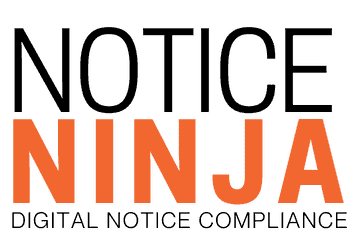Yes, NOTICENINJA is corporate tax notice compliance software that automates key workflows including notice assignments. The platform employs a rule-based system that can manage multiple level rules and ensure notices are directed to the appropriate stakeholder. As a result, you’ll never have to worry about notices being misdirected or slipping between the cracks.

How Private Equity CFOs Are Rethinking Compliance in the Exit Era

16 September
Exits Are Back on the Table—But Are You Ready?
As we approach the final quarter of 2025, private equity CFOs are under mounting pressure to execute exits that have been delayed for years. The Federal Reserve has hinted at interest rate cuts, public markets are regaining momentum, and the backlog of aging portfolio companies has become too large to ignore. According to BDO’s 2025 PE Survey, 63 percent of funds are holding their portcos for five years or more, and 84 percent said their holding periods increased in the past year. With $2 trillion in dry powder, the clock is ticking.
Compliance Readiness: The Hidden Deal Killer
But there’s one hidden hurdle standing between intent and execution: compliance readiness.
"You don’t want to discover a missing refund check or un-filed POA during a buyer’s diligence call," shared a Managing Director at a mid-market PE firm. "That is a fast way to lose leverage."
The Exit Strategist’s New Role
This is where CFOs—especially those who fit the Exit Strategist or Buy-and-Builder archetypes—must shift their mindset. Compliance isn’t a box to check on the way out. It’s a deal-accelerating lever. And for firms preparing for liquidity events in 2026, the fourth quarter of 2025 is the last pit stop.
Imagine you’re preparing a Formula 1 car for the final lap. The engine is tuned, the tires are perfect, and the driver is ready. But one missing bolt on the suspension can take the whole car out. That bolt, in our world, is tax compliance.
What Tax Compliance Looks Like in Practice
In the real world, that bolt looks like a backlog of unresolved tax notices, a single amended return waiting in someone's inbox, or a jurisdictional registration issue that delays a closing. These are not just nuisances. They are liabilities that can stall or even kill deals.
BDO outlines four CFO archetypes in private equity, each with unique responsibilities based on the portfolio's lifecycle stage. The Exit Strategist thrives in the endgame—bringing polish, structure, and clear financial narratives to drive valuation. But even the best strategist needs clean, audit-ready data. Without it, investor confidence erodes, timelines slip, and value is lost.
Real Results: What Streamlined Compliance Looks Like
A national commercial bank featured in a recent NOTICENINJA case study was experiencing this friction firsthand. With over 100 users across corporate tax and payroll, their sequential notice backlog had spiraled out of control. Filing mismatches were causing refund delays, audit findings revealed gaps, and workflows broke down when internal tech resources were reassigned. Within 60 days of implementation, NOTICENINJA helped them recover over $2 million in compliance value.
"We no longer dread the mailbox," said the VP of Payroll Tax. "The speed, visibility, and control this platform provides is unmatched."
Bring Automation to the Entire Compliance Lifecycle
This is not about ripping and replacing core systems. It’s about enhancing what already exists. NOTICENINJA integrates with existing systems and brings automation to the full tax notice lifecycle: intake, routing, research, amended returns, POA workflows, refund tracking, and audit documentation. It eliminates the disarray that can disrupt exit timelines when compliance processes are managed through spreadsheets and inboxes.
Q4 is also the optimal time to act. October and November are when portfolio operating teams often conduct audit reviews and finalize year-end compliance steps. It’s the last real window to strengthen systems before buyer scrutiny begins in Q1., October and November are two of the most effective months for private equity marketing engagement. It’s when portfolio operating teams are reviewing audit risk and beginning year-end wrap-ups. It’s also the last window to clean up before buyer scrutiny kicks off in Q1.
"Compliance is not a back-office function. It’s part of value creation," shared a Portfolio Operations Director. "If your compliance data can’t be surfaced in minutes, you’re already behind."
Clean Compliance Data Protects Your Valuation
Compliance gaps don’t just delay exits—they create negotiation leverage for buyers. A missed amended return or unresolved notice can become a price chip, a withheld escrow, or a prolonged close. Firms that streamline this process protect their valuations and reduce deal friction.
What Can You Do Now
- Identify which portfolio companies have outstanding notices or amended returns
- Centralize visibility with a unified platform that tracks workflows and outcomes
- Automate manual steps to reduce turnaround time and human error
- Ensure your compliance data is audit-ready and accessible
If you are planning for exits in the next 6 to 12 months, now is the time to bring tax compliance into your portfolio value strategy.
Schedule a private walkthrough of how NOTICENINJA supports exit-stage CFOs. Begin now so your portfolio companies are fully prepared for the 2026 deal cycle with confidence, speed, and control.
RELATED POSTS
- Buried in Tax Notices, Author Rick Pinkerman on CFO Outlook
- Private Equity and Tax Notices - A Tale of Two Risk Strategies
- Can Your Tax Team Resolve Notices in Under 60 Days?
